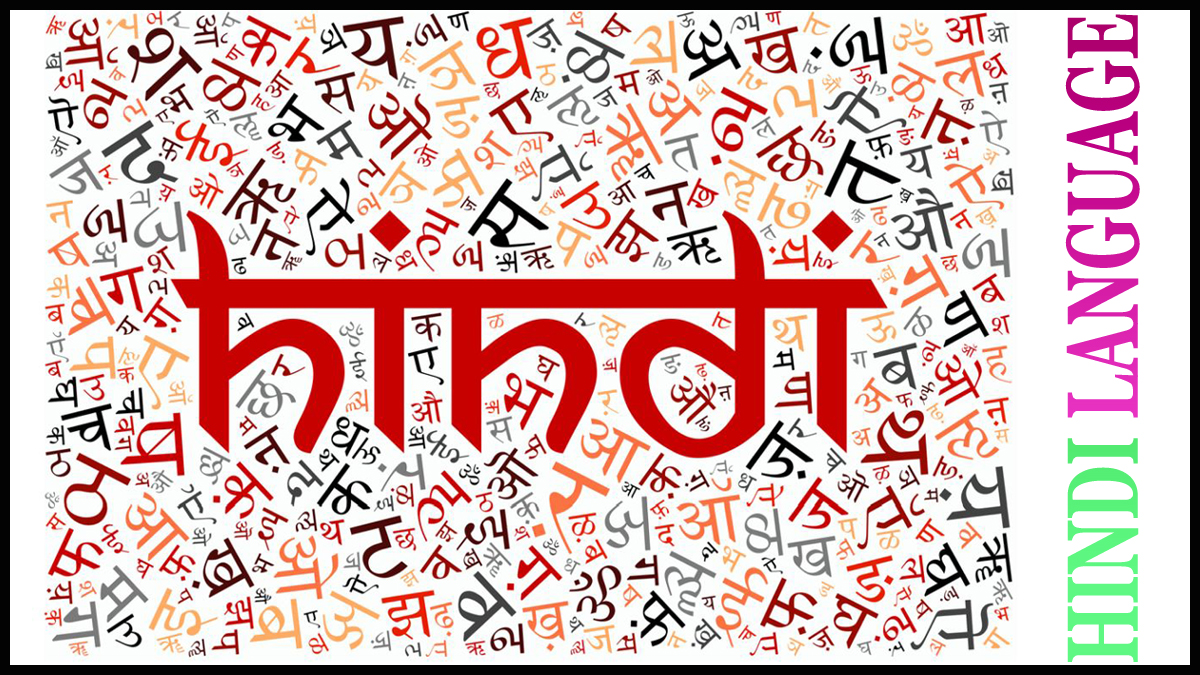
Hindi Language: Hindi is an Indo-Aryan language spoken primarily in India and also in Nepal, Mauritius, and Fiji.
It is the official language of the Union of India, and one of the 22 official languages recognized by the Constitution of India.
Hindi is written in the Devanagari script, which is also used to write several other languages in India, such as Nepali and Sanskrit.
Hindi is the fourth-most-spoken language in the world, with over 615 million speakers. It is the primary language spoken in the northern and central regions of India. And is also widely spoken in urban areas throughout the country. It is also one of the official languages of the Indian government, along with English.
The development of Hindi Language
The development of Hindi can be traced back to the 10th century. And the dialects spoken in the region of Delhi. Over time, Hindi has been heavily influenced by the languages and cultures of the invaders and traders who came to India. Such as Persian, Arabic, and English. Today, Hindi is written in a standardized form called “Khari Boli.” Which is based on the dialect spoken in the Delhi region.
In addition to standard Hindi, there are also many regional dialects spoken in India. Such as Bhojpuri, Rajasthani, and Punjabi, which are considered to be separate languages. However, they are closely related to Hindi and share many similarities in grammar and vocabulary.
Hindi is taught as a Second language in schools and universities
In India, Hindi Language is taught as a second language in schools and universities. And is often used as a lingua franca among people who speak different native languages. Additionally, Hindi-language films and television shows are popular not only in India but also in other parts of South Asia and the diaspora.
Hindi is a rich and complex language, with a long literary tradition. The oldest Hindi text is the “Hieun Tsang” which is a translation of a Chinese text from 7th century. Its Classical form is rich in poetry and devotional texts. Whereas in modern times it has also been used in scientific, technical and legal literature.
Origin of Hindi Language
The origin of the Hindi can be traced back to the 10th century and the dialects spoken in the region around Delhi, in northern India. Hindi is a member of the Indo-Aryan branch of the Indo-European language family. And is closely related to other Indo-Aryan languages such as Bengali, Punjabi, and Urdu.
The earliest form of Hindi was known as “Apabhramsa,” which was a mixture of various dialects spoken in northern India. Over time, Apabhramsa evolved into several distinct dialects, including “Khari Boli,” which is considered to be the basis of modern Hindi.
In the 16th century, the Mughal Empire established itself in India and brought with it the Persian language and culture. This had a profound influence on the development of Hindi, and many Persian words were borrowed and incorporated into the language. Additionally, Arabic and Turkish words were also added to Hindi’s vocabulary.
During the British colonial period in India
During the British colonial period in India, English also had an influence on the Hindi-language. And many English words were borrowed and incorporated into the language.
Also During the 19th century, Hindi activists and scholars such as Bhartendu Harishchandra. Raja Rammohan Roy, and Pandit Ishwar Chandra Vidyasagar played a major role in the development of Modern Hindi by promoting its literary use. Standardizing its grammar and vocabulary, and creating new words from Sanskrit roots.
The Standard Hindi language
The Standard Hindi language that is used today is based on the Khari Boli dialect and was formalized by the Government of India in the 1950s. It is also the basis of official Hindi, which is one of the official languages of the Indian government.
In addition to the influences of Persian, Arabic, Turkish, and English. Hindi has also been influenced by other languages and dialects spoken in India. For example, the Rajasthani and Bhojpuri dialects have contributed words and phrases to Hindi. Similarly, the local dialects of the regions in which Hindi is spoken have influenced the pronunciation and grammar of the language.
Hindi has also been influenced by the literary traditions of other Indian languages, such as Sanskrit and Prakrit. Many words and phrases in Hindi have their roots in Sanskrit. And classical Hindi literature often includes verses and phrases borrowed from Sanskrit texts.
Another aspect of Hindi language is its diversity
Another aspect of the Hindi language is its diversity. It has several dialects, spoken in different regions and by different communities. These dialects, although similar to Hindi, have their own unique characteristics and features. Some of the major dialects of Hindi are Braj, Avadhi, Bhojpuri, Rajasthani, and Bundeli, to name a few.
Conclusion
In conclusion, the Hindi language has a rich and complex history, shaped by centuries of cultural exchange, trade, and invasions. Its development was influenced by the languages and cultures of the peoples who settled and ruled over northern India. Including Persian, Arabic, Turkish, English, and other Indian languages such as Sanskrit and Prakrit. Today, Hindi continues to evolve and adapt to the changing needs of its speakers and remains a vibrant and important language in India and around the world.
Also Read – Tata Consultancy Services (TCS) Everything you need to Know
Also Read – Thyroid: Function, Symptoms & Treatment

2 thoughts on “Hindi Language: Things You Never Knew About Hindi”